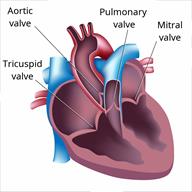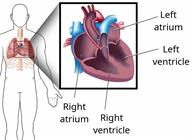ThisisPatientEngagementcontent
How the Heart Works
Learn more about our Patient Engagement products now! Turn your patients into active participants in their healthcare by giving them easy access to the same evidence-based information you trust – but delivered in an easy-to-understand format.
The heart is a muscular organ that pumps blood through the entire body. This job is important because blood carries oxygen and nutrients from the foods you eat and the air you breathe to all the cells in your body. Blood also carries waste products away from your cells.

Heart chambers

The heart is made up of four chambers. The upper chambers are called the right atrium and left atrium, and the lower chambers are called the right ventricle and left ventricle.
Heart valves
The heart has several valves, including valves that separate the upper and lower chambers from each other. There are also valves that separate the lower chambers of the heart from pathways that lead away from the heart. The valves of the heart include:The heart beats when the chambers of the heart squeeze (contract). The process starts when blood collects in the upper chambers of the heart. Once the chambers are full, an electrical signal from a group of cells called the sinoatrial node (SA node) makes the upper chambers contract. When the chambers contract, they push the blood through the tricuspid and mitral valves into the lower chambers of the heart.
Once the lower chambers have filled with blood, an electrical signal from a group of cells called the atrioventricular node (AV node) causes these chambers to contract. This pushes blood through the pulmonary and aortic valves and out of the heart.
The heart beats faster and works harder when you are active. It beats more slowly and works less hard when you are resting. Your brain sends signals to the heart to meet the oxygen needs of your body.
This information is not intended to replace advice given to you by your health care provider. Make sure you discuss any questions you have with your health care provider.
Cookies are used by this site. To decline or learn more, visit our cookie notice.
Copyright © 2025 Elsevier, its licensors, and contributors. All rights are reserved, including those for text and data mining, AI training, and similar technologies.